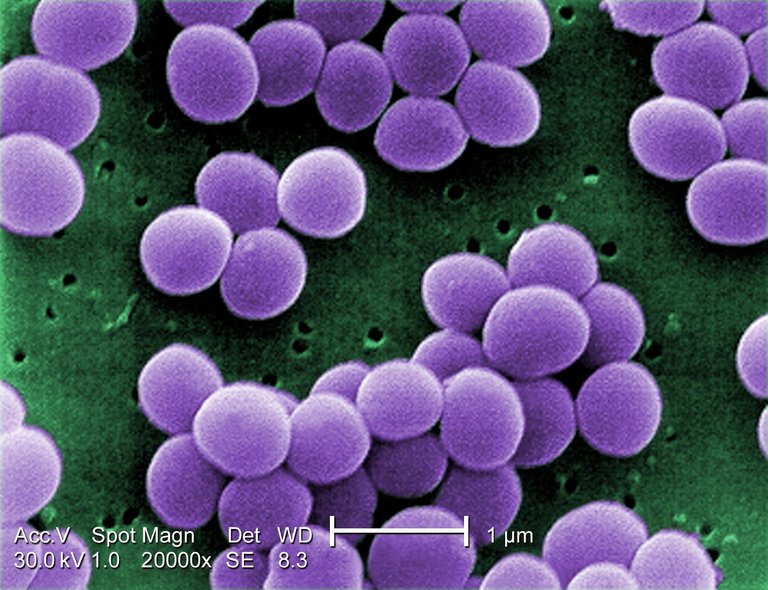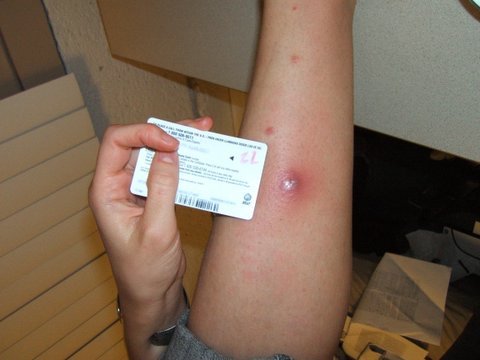“We are about to become neighbours, but I can harm you! I do not want this to occur, so let me set my rules while you set yours. Now, this is my only rule in which my many other rules are embedded, and that is, never let me gain entrance into the inner parts of your skin tissues or into your visceral organs. I want you to know that I mean you no harm, but this rule, please abide by it and we will remain friendly neighbours for life”. These were the words of the skin microbiota to its human host at the inauguration of their relationship.
The human host however replied “I accept your rule. It’s not much of a big deal to me to ensure that you remain on the outer part of my skin (the epidermis). As you can see, my skin is tough enough as a barrier to prevent your entrance into my deeper parts, and my skin’s keratinocytes are well able to see to this agreement”.
The human skin and its microbiota had a symbiotic “agreement” that started “almost immediately” after birth. The word symbiotic in this context means an association that involves two parties that one or both members depend on the other. Some of them (skin microbiota) develop a commensal association with human skin and others a mutualistic type, but could turned out to be opportunistic pathogens.
Dohumans keep to this rule? Well, the answer is more of a NO than YES. So what happens when there is a breach of agreement?
Kindly join me as we explore the answers to these questions.
Babies delivered whether vaginally or through Cesarean-section, do have their skins colonized by skin bacteria from their handlers (doctors, midwives, nurses, the happy mother and family).
Recent studies have shown that contrary to the general believe that skin bacteria were entirely pathogenic, some members of the skin microbiota community play essential beneficial roles which include production of certain molecules, such as selective antimicrobial peptides and lantibiotics that prevents the adherence and colonization of the skin by pathogens source.
In addition, Nakatsuji, et al. (2013) reported the possibility of skin surface bacterial cells controlling the activities of cells below the surface, as a number of skin bacteria also enters the dermal stroma and interact with specific host cells. They were also found to play significant roles in determining the activities of host immune system.
Members of the skin microbiota, Staphylococcus species in particular can enter into the dermis and deeper subcutaneous tissue if there is a breech on the skin whether as a result of injury to the skin or any other cause.

[Licence: CCO]
SSTI include infections that arise from invasion of the skin and soft tissues of the dermis and even deeper layers by opportunistic pathogens among the members of the skin microbiota, and subsequent interaction of these micoorganisms with the host immune system.
Examples of SSTIs include:
- Impetigo (bacterial infection of superficial skin source).
- Folliculitis (infection and inflammation of one or more hair follicles
- Furuncles (infection of the hair follicle source).
- Carbuncles (a “bunch” of boils interconnected under the skin source).
- Cellulitis (bacterial infections involving the inner layers of the skin source) among others.
Of major concern to this write up are skin and soft tissue infections caused by a prominent skin bacteria, Staphylococcus aureus, a typical skin commensal bacterium and opportunistic pathogen. They can change the association they have with man from a commensal relationship to a parasitic one where they become pathogens when they find entrance into deeper skin tissues.
This article aims to spotlight the formation of abscesses by S. aureus induced skin and soft tissue infections.
“An abscess is a painful area of inflamed tissue that is filled with pus” – as defined by the Merriam-Webster dictionary.
Abscesses are formed in an attempt to contain an infection of the skin and soft tissue.

[Licence: CCO]
Polymorphonuclear leukocytes also called neutrophils are cells of the innate immune system. They are phagocytes and are among the first responders to foreign invasion, which is one of the reasons they are mostly involved in response to skin invasion by S. aureus.
In my last article, I discussed briefly the phagocytic nature of phagocytes. How they ingest the intruders, “digest” them by releasing certain “killer enzymes” and either release the digested microbes through exocytosis or further process them into antigens and present these antigens to “soldiers” of the adaptive immune system. Neutrophils as phagocytes function in similar way. You can read more here.
Following staphylococcal invasion, keratinocytes of the skin (which are major players in raising a “standard” against skin microbiota) detect the intruders via their pattern recognition receptors, and activate pro-inflammatory response that is followed by an acute inflammation in an attempt to heal up the site of injury (caused by the infection).
The process of inflammation attracts cells of the innate immune system such as macrophages and phagocytes to the site of infection. These cells, together with keratinocytes release chemotactic factors which serve to recruit large numbers of neutrophils to the site of infection. Neutrophils then destroy cells of the invading S. aureus by phagocytosis.
In order to maintain immune “stability”, recruited neutrophils whose lifespan expires at the site of infection undergoes programmed cell death called apoptosis and the debris are cleared off by other phagocytes. This process however, can be hijacked by S. aureus, as this bacterium produces certain molecular toxins such as leukotoxins that induces an undue lysis or death of neutrophils in a process called necrosis.
So the situation at the site of infection is such that, as neutrophils continue to phagocytize staphylococcal cells, they themselves are attacked by toxins produced by their “prey” (S. aureus) and are necrotized.
A whole complex of reactions due to infection and immune activities are taking place at the infection site. In order to contain this infection and eventually eliminate it, the body naturally tends to enclose the site of infection by building a “wall” of fibrous capsule around this area.

[Licence: CCO]
An abscess announces itself with some of these symptoms and signs which include redness, heat, swelling, pain, loss of function and in few conditions fever may also join in.
The use of antibiotics is not recommended for uncomplicated SSTI abscess. Incision and drainage of the abscess is enough treatment to restore the affected skin area back to its normal state. I believe many of us can testify to this. We just try to release the pus in the reddish swollen area on our abscessed skin, then in few days the pain and the abscess is gone.
For the complicated SSTI abscesses caused by S. aureus however, the use of traditional antibiotics such as flucloxacillin or dicloxacillin is recommended. In cases of that caused by the “powerful” methicillin resistant Staphylococcus aureus, MRSA, more complex antibiotics like doxycycline and trimethoprim-sulfamethoxazole are recommended for its treatment.
I must add that S. aureus, known for its capability to develop resistance to antibiotics may evolve to develop resistance to antibiotics (intended to treat complex abscesses), if they (antibiotics) are used outside of due recommendation.
A sole "efficient" preventive measure against Staphylococcal invasion of the soft and underlying tissues of the skin is to prevent their entrance into layers beyond the epidermis. The epidermal layer of the skin was our agreement. That is the apartment we rented out to them, they must not go beyond it.
In summary, S. aureus and other skin microbiota begin to colonize the skin right after birth. They make their bed and remain on the epidermal layer of the skin, and must not be allowed to invade inner tissues. But when invasion occurs, responses and complex reactions occur and all these are enclosed in an abscess so that the infection can be limited to that particular site and not spread to other parts. The abscess can be drained in case of uncomplicated infection, and antibiotics given in case of complex ones. The sure way to prevent all these is to maintain good hygiene and practices that keep these opportunist out of the skin’s inner tissues.
Thanks for reading!!!
Nice work! I like how you emphasize, even in the title, that Staph is part of our normal microbiota. I'd like to add that Staph infections can be much worse than just absesses on the skin depending on the sub-strain of S. aureus and the strength of the host's immune system.
Oh thanks for the thoughtful addition. Yes, it could be much worse in immuno- compromised individuals.
I actually take antibiotics whenever I have wounds. But I just learnt here that itd not meant to be taken for non-serious SSTI abscesses. And in a nutshell, a good personal hygiene is enough keep us well and healthy. Well, I guess I should stop taking bath just once in a week ☺
Thank you for the educating post, @herbayomi.
I am @teekintv and I write STEM.
Haha... Yes, you need to take your bath regularly. Twice a day is okay. Good personal hygiene is essential. And use antibiotics ONLY when recommended. Thanks for reading Sir @teekintv
Okay sir. Thank you for every time. My sister is for grab for you ☺
Really??? I am interested sir
Haha me too
Lol, at least, lets see his sister first before the competition starts.
Lol, at least, lets see
His sister first before the
Competition starts.
- herbayomi
I'm a bot. I detect haiku.
Lol... I think that's the mentality Germany used to approach the world cup. I can't take chances.
i like the way you relate the skin microbiota and human host using neighbour -co-habiting analogy. it makes it fun to read. it has opened my eyes to subtle abuse of antibiotics which we unknowingly practice .
Thank you Ma, I really appreciate you stopping by. Yes, antibiotics only when recommended.
Another punchline delivered 😊. More from where this is coming from.
My mentor Sir, thank you!
🙄🙄
pokes eye
Hi @herbayomi!
Your post was upvoted by utopian.io in cooperation with steemstem - supporting knowledge, innovation and technological advancement on the Steem Blockchain.
Contribute to Open Source with utopian.io
Learn how to contribute on our website and join the new open source economy.
Want to chat? Join the Utopian Community on Discord https://discord.gg/h52nFrV
Very good post bro
I plan on to write on scabies anytime soon based on the horrible experience i had with it.
The human skin is really delicate and is always under threat of foreign bodies.
Thanks bro.
"Always under threat" indeed!!!
I am looking forward to learn more about scabies on your upcoming post.
Sure bro.
You're welcome.
Congratulations @herbayomi! You have completed some achievement on Steemit and have been rewarded with new badge(s) :
Click on the badge to view your Board of Honor.
If you no longer want to receive notifications, reply to this comment with the word
STOPDo not miss the last post from @steemitboard!
Participate in the SteemitBoard World Cup Contest!
Collect World Cup badges and win free SBD
Support the Gold Sponsors of the contest: @good-karma and @lukestokes
A scholarly presentation of skin microflora and the human host. Keep it up!
My boss!!! welcome to steemit. Thank you Sir. You taught me well!